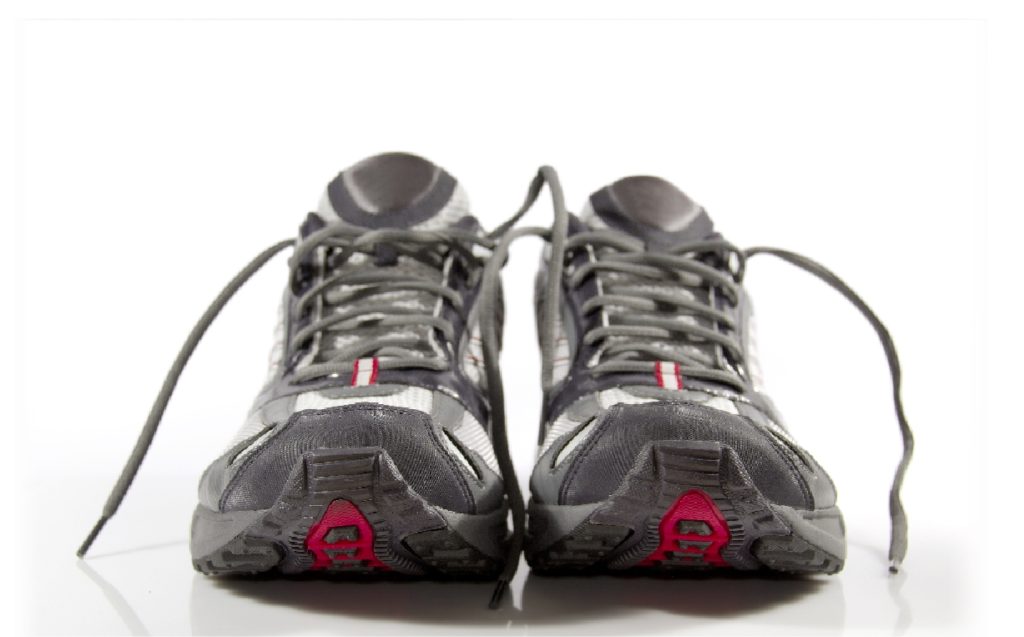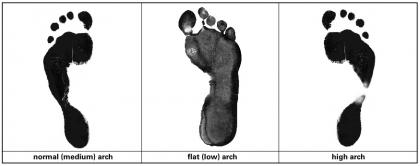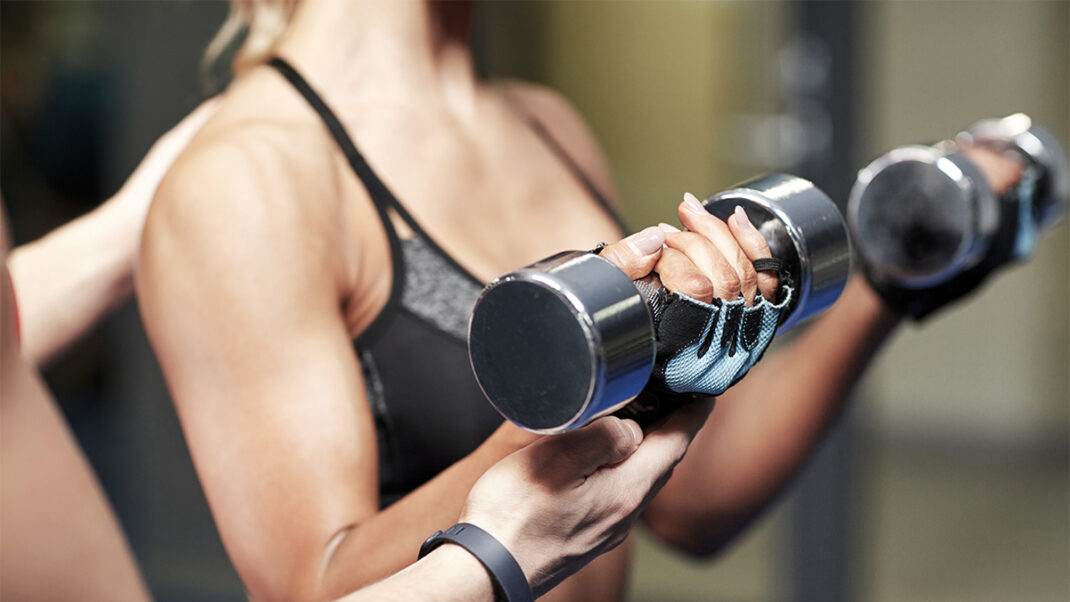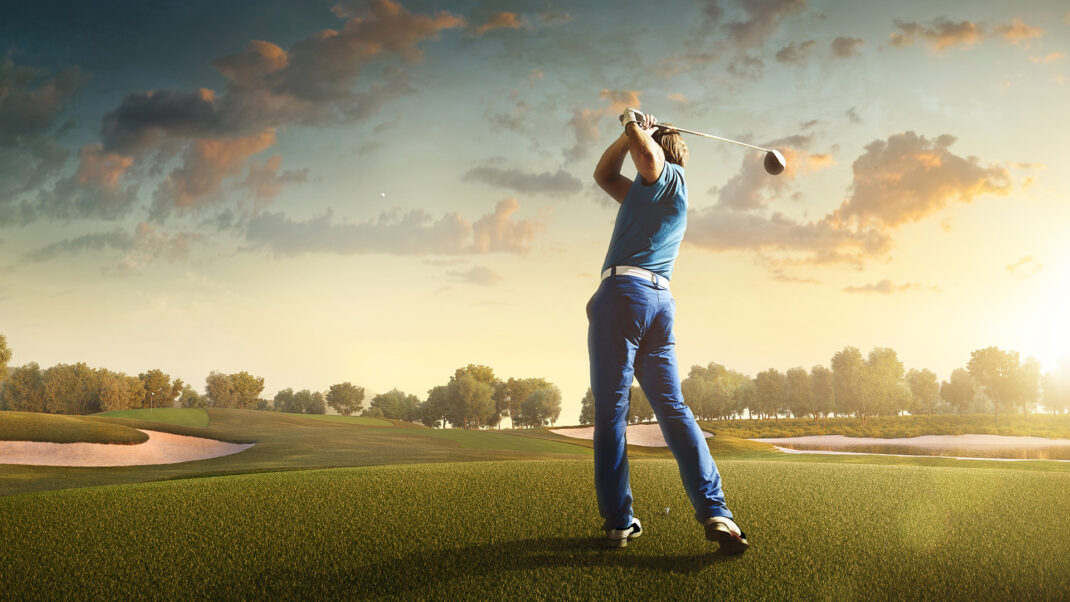Your Feet, Your Shoes, Your Choices
When you’re buying or recommending shoes, think about the way the foot functions and the importance of a strong foundation.

How often has a client or student approached you and asked, “What type of shoe would be best for this workout?” At the university where I teach, I am asked this question every quarter by several hundred students, all of whom have different needs, different feet and different histories.
Answering that question can range from simply handing over a fitness shoe company catalog or Web address to having a full discussion of foot mechanics. Before you give an answer, arm (or foot) yourself with some essential information that will help you guide your students and clients.
The Foot
Running expert Jason Karp, PhD, of San Diego, says that the right type of shoe depends on two things: your foot type (size of your arches) and what your foot does when it touches the ground (supination or pronation). Karp recommends the “wet test” to determine foot type. “Walk across a flat surface with wet feet so you can see your footprint and see the kind of arches you have. Also, look at the wear pattern and curvature of your current [fitness] shoes.”
At www.runnersworld.com, you can take a self-administered wet test to see which of three basic foot types you have: normal (medium) arch, flat (low) arch or high arch (see Figure 1). First, pour a little bit of water into a shallow pan, such as a jelly roll pan. Now step onto the pan with bare feet, then onto a paper shopping bag or similar blank, heavy paper. Finally, step off the paper and take a look at the print your feet left on the paper.
The most common foot type is the normal arch, also known as a “normal pronator.” Normal pronation absorbs shock when the arch collapses inward. A low arch (flat foot) probably indicates overpronation, which means that upon footstrike, the arch collapses inward—excessive foot motion that can increase the risk of injury. The least common foot type is a high arch, which indicates underpronation, or “supination.” In this case, the arch isn’t collapsing enough to absorb the shock traveling up the leg; this also can increase injury susceptibility (Runner’s World 2004). According to Karp, very few runners supinate; they mostly pronate, “which is the natural way for the foot to move when it lands.”
More informative and detailed than the wet test is a complete evaluation, preferably one that assesses the entire body. At AIM Sports Medicine in Hermosa Beach, California, Lenny Parracino, fellow of applied functional science and a faculty member of Gray Institute, performs a specific foot video evaluation that looks at gait, arch height and toe sign and also does a structural exam on the table to assess for structural positioning. Recognizing that this detailed evaluation is probably not feasible in the average situation, Parracino recommends “simply looking at arch height in a weight-bearing stance. Is the arch high to medium-low or low?” Since shoes are made for all types of feet and actions, knowing your foot type is a necessary step in choosing shoes that will help prevent injury.
Based in Orlando, Florida, Robert Duggan, DPM, FACFAS, LAT, is the director of foot and ankle services at Physician Associates. “Feet are like any part of the body. We have inherited traits that give us a structure that we own. We often talk of motions of the foot [pronation and supination] as if they were abnormal or bad in every case. These movements are needed for full function. I’ve had patients who lack motion in a joint or set of joints, but this does not spell failure. We must work with these patients to assist the foot in obtaining, for example, less pronation or more shock absorption.
“Many people will participate in activities that are well within the structural tolerances of their feet. Others will place demands that the feet cannot support. These demands and the body’s response to them will change daily or even by the minute in athletes. The key is to match the response to the demands. This is done by conditioning the feet [like any other part of the body] and assisting them as we can. Think of flippers and swimming. We assist the feet in this case to be better ‘fins.’”
Common Injuries
A number of biomechanical and training experts had diverse comments about common injuries they’ve seen related to feet and shoe wear. “Overuse injuries are typically related to the wrong footwear for specific activities, not replacing old shoes and [the fact that] people don’t address their supination or pronation issues. [They] end up wearing shoes that don’t support their feet and can even make their foot problems worse,” explains Amy Ashmore, PhD, of Las Vegas, a professor at the College of Southern Nevada and the online American Military University, and owner of Amy Ashmore Kinetics LLC.
Doug Stewart, PhD, of San Diego, is a former director of research for Reebok® and author of an upcoming book on mechanical health that focuses on solutions for sore feet, knees, hips and backs. “The most common foot problems I’ve seen are those associated with poor foot posture or foot mobility, or excessive pronation, which is associated with laxity of the ligaments that support the foot and ankle. Examples of these would be neuromas (often resulting in numbness and tingling in the front of the foot), plantar fasciitis (soreness of the fascia—running from the front to the back of the foot—on the bottom of the foot) and Achilles problems.”
San Diego–based Justin Price, MA—corrective exercise specialist, 2006 IDEA Personal Trainer of the Year and creator of The Biomechanics Method—adds, “There are two main deviations that cause pain and injury in the foot and ankle area: overpronation and lack of dorsal flexion. Pronation is a normal function in the body that occurs when the foot rolls inward toward the midline of the body. This movement causes the heel to collapse inward and the medial arch of the foot to elongate and flatten. When people overpronate, however, the foot collapses too far inward for normal function and disrupts proper functioning of the entire body.
“Dorsiflexion involves bringing the foot toward the shin or vice versa. This can happen when the foot is in contact with the ground, like when [a person is] squatting and the shin moves forward over the foot, or when swinging the leg forward and lifting the foot up to clear the ground when walking. Dorsiflexion is a natural and necessary function of the foot and ankle. When people lose their ability to dorsiflex through a full range of motion, it impairs other movements of the body as well.
“Although these are the most common imbalances of the feet and ankles, the feet and ankles are intrinsically linked to the rest of the body. As such, imbalances in the feet and ankles are only a reflection of what is happening in the rest of the body. Therefore, if someone has ‘feet issues,’ then they have other issues as well!”
Parracino is in complete agreement that the foot is part of a “whole body” chain. “The biggest foot issue I think people face is not understanding the importance of the foot and how it functions and governs human movement. The foot is the first thing that hits the ground and therefore creates a reaction to every upright exercise.”
San Diego trainer, adjunct professor and author Michol Dalcourt believes the most common foot problem facing people today is “a body-wide inability to decelerate the effects of gravity effectively and efficiently, which shows up as collapsed arches, peri-foot pain (e.g., plantar fasciitis) and hallux valgus (deformity of the great toe).”
Based on his years of researching joint stiffness, landing patterns, injuries and so on, Benno Nigg, PhD, a professor of biomechanics and founder and director of the Human Performance Lab at the University of Calgary, Alberta, concludes, “One of the major problems is that [fitness] shoes provide too much support. This means that the muscles don’t have to work and that they may slowly deteriorate.” In other words, some shoes provide too much cushioning. And there is plenty of research [including his own] to support this assertion.
In a 2006 study (Bishop et al.), highly cushioned athletic shoes were found to increase limb stiffness and running kinematics. “Data indicate that the prelanding factors were similar among conditions, allowing us to speculate that the changes in peak limb stiffness were related primarily to footwear. Runners landed in more dorsiflexion when wearing shoes than when running barefoot,” according to the study.
Another study cautioned against wearing cushioned athletic shoes (Robbins & Waked 1997). “Athletic footwear is associated with frequent injury, which is thought to result from repetitive impact,” stated the authors. “No scientific data suggest they protect well. Expensive athletic shoes are deceptively advertised to safeguard well through ‘cushioning impact,’ yet account for 123% greater injury frequency than the cheapest ones.”
Michael Luan, DC, of Goleta, California, a chiropractor and exercise specialist, relates an incident with a former client that illustrates this phenomenon. “I had a running client for about a year who had all kinds of problems: gait breakdown, shin splints and so on. He put about $3,000 into expensive shoes even though I kept advising him to get some basic shoes. As a joke he went to the store and bought a pair of cheap $10 shoes, and I said, ‘That’s it. That’s the right shoe.’ It had no padding, a thin sole and no arch construction. Almost immediately, his problems disappeared.
“It’s just that nowadays we are all too used to shoes, so we don’t function properly and don’t develop foot strength and proprioception. A lot of shoes out there are disastrous—a complete nightmare! The fewer things that get in the way of the foot doing what it needs to do, the better.”
Shoe Recommendation Basics
So, does this mean you and your clients shouldn’t wear shoes at all? Not in the least. There are still many options and many good shoes out there, including barefoot “slip-ons.” (For a detailed look at the latest on barefoot training, see the article “Barefoot Running” by Christopher Pauls and Len Kravitz, PhD, in the April 2010 issue of IDEA Fitness Journal.)
Nigg looks at this from a practical angle. “For running on regular ‘sport-related surfaces’ I do recommend shoes. There is a simple reason: we don’t have enough protection against blisters, etc. Running on a nice lawn would be excellent. And for running in Calgary [Nigg’s hometown], I would suggest shoes because it’s rather cold.”
For fitness classes, Nigg believes comfort is paramount. “Comfort, comfort, comfort. That is the most important aspect. The foot is not made for landing toe or midfoot or heel, [so it is irrelevant whether it’s a cardio or running shoe]. Depending on the boundary conditions (e.g., surface, speed), we select a specific landing strategy, which may be heel or toe or midfoot. Thus, the shoe should not limit the landing strategies.”
Dalcourt shares some points to consider. “Make sure the shoe is not higher in the rear foot in relation to the forefoot. Make sure that the sole of the shoe (in the rear) is not wider than the rear foot—where the fabric houses the calcaneus [heel counter]. A proper shoe would not have a sole that is wider than the counter. And make sure the medial arch is not too pronounced or the shoe too stiff.”
When it comes to running, Karp mentions three types of shoes: cushioning (or neutral), stability and motion control. “Cushioning shoes are for people with normal arches who don’t overpronate and for the rare runners who supinate. Stability shoes are for those who overpronate a little, and motion control shoes do just that, and are great for people with flat feet who overpronate a lot.”
Luan agrees with the need for shoes for running, as does Ashmore. “The best ones are those that allow for the most proprioception,” states Luan. “For runners, I think a shoe with a thinner sole and the least amount of construction or padding is best. Have your clients stand on one foot, with eyes open and shut. Can they balance? Are they able to stand level in the shoes? Can they cut, change direction, twist, move on level and unlevel surfaces—or does the gait break down? Different shoes for different activities are fine, especially as our feet are no longer trained to the level where they can function properly without them.” Adds Ashmore, “People should buy shoes that are specific to running, period. No cross-trainers. For [other fitness activities] cross-trainers are fine.”
To Stewart, posture and surfaces are important factors. “Have good posture, which includes your foot as it’s your foundation, and everything above it is affected. Wear shoes and/or footbeds (orthotics) that result in your foot having good posture. It is very common to wear shoes that are too cushiony, and therefore nonsupportive. Also, most man-made surfaces do not support or challenge our feet in a healthy way, and no shoe can overcome this.”
Trends
One type of “shoe” has gotten a lot of press lately: barefoot “slippers.” These “slip-ons” are not exactly a shoe, nor are they a sock; in some cases they are more like a thick rubber foot glove. Their purpose is to mimic barefoot movement while avoiding some of the risks (e.g., sharp objects, extreme heat). As with shoes, the barefoot slip-ons differ in purpose; some are based on the feeling of being barefoot on sand, others on the shape of the bare foot, still others on the kinematics of flat landing.
Shoes that tout the benefits of barefoot training and running include Vibram FiveFingers®, Terra Plana Vivo Barefoot™, Nike® Huaraches and Nike® Free (this last shoe is not a slip-on, but according to Nike marketing material it is made to “mimic running barefoot on grass”).
All of the experts consulted for this article have a generally favorable opinion of the barefoot slip-ons, with the caveat of taking the environment into consideration. As Stewart puts it, “Man-made surfaces are usually too flat, too hard and always the same. As time passes our body does what we ask it to do, which would be to flatten to accommodate these surfaces. To be healthy, you would want to go barefoot on a naturally randomly changing, softer surface. I get feedback from clients complaining that they feel rocks through their shoes, when in fact, a thinner-soled shoe that allows your foot to be pushed around by rocks would be healthiest.” Dalcourt concurs and says that wearing this type of footwear should “be the ultimate goal of the client, although it may take some time to move into a shoe like this.”
Duggan adds, “The foot can tolerate barefoot running, but needs to be conditioned for it. We’ve seen a unique list of injuries and maladies from this type of running. Bone density, sickness, injury and time off the feet are a few examples of how the musculoskeletal health of the foot changes. We are always modifying general training for our bodies and should bring the same approach to our feet. When I see runners in my practice, I ask them, ‘What do you have planned for your feet?’ Many athletes have no idea of the conditioning a foot requires given its health and structure.” (For tips on transitioning to barefoot technology, see the sidebar “Five Benefits of Adding Barefoot Training to an Exercise Program” in the April 2010 IDEA Fitness Journal article “Barefoot Running,” by Christopher Pauls and Len Kravitz, PhD.)
Gait On!
In the final analysis, the best advice to give clients probably begins with a question (or two): What type of arch do you have? What does your foot do when you move? If they can answer those two questions, they will not only have a leg up when it comes to discerning between “marketing science” and “real science” in making shoe choices, as Parracino puts it, but will also be better able to understand their own foot function. “It’s a lot like trying on eyeglasses; you’ll know when it’s the right fit. Proper shoes should feel comfortably strange.”
Check out this list of some of the companies that specialize in fitness-related shoes and information:
- Adidas®, www.adidas.com
- AVIA® Select (for instructors), www.aviaselect.com
- Brooks® Running, www.brooksrunning.com
- Foot Solutions®, www.footsolutions.com
- K-Swiss®, www.kswiss.com
- New Balance®, www.newbalance.com
- Nike®, www.nike.com
- Reebok®, www.reebok.com
- RYKÄ® Fit Club (for instructors; women’s shoes only), www.rykafit.com
- Skechers®, www.skechers.com/info/shape_ups
- Under Armour®, www.underarmour.com
- Vibram FiveFingers®, www.vibramfivefingers.com
When you’re looking for shoes, keep the following tips in mind.
- Buy from a store that will ensure proper shoe type and fit. If you order online, verify the store’s return policy.
- Get fitted in the evening, when your feet are largest. There should be half an inch between the longest toe and the toe box.
- If you wear orthotic inserts, bring them along when trying on shoes.
- Look for fitness shoes that feel immediately comfortable; they should not have to be broken in.
- Untie shoes before removing them; taking them off by stepping on the backs ruins the heel counter.
- Don’t dry your shoes in the dryer, as the excessive heat will degrade the components.
- Replace shoes every 6 months.
- To determine wear, look for wrinkling and/or compression of the sock liner in the midsole.
Source: Adapted from Asplund, C.A., & Brown, D.L. 2005. The running shoe prescription: Fit for performance. The Physician and Sportsmedicine,33 (1), 299-303.
References
Asplund, C.A., & Brown, D.L. 2005. The running shoe prescription: Fit for performance. The Physician and Sportsmedicine, 33 (1), 299–303.
Bishop, M., et al. 2006. Athletic footwear, leg stiffness, and running kinematics. Journal of Athletic Training, 41 (4), 387–92.
Robbins, S., & Waked, E. 1997. Hazard of deceptive advertising of athletic footwear. British Journal of Sports Medicine, 31, 299–303.
Runner’s World. 2004. Running shoes & gear: Running shoe basics: Orthotics & pronation. www.runnersworld.com/article/0,7120,s6-240-319-327-7727-0,00.html#; retrieved Mar. 3, 2010.
Alexandra Williams, MA
Alexandra Williams has taught fitness for 17 years and has a master’s degree in agency counseling, with an emphasis on marriage and family. Her professional training has forced her to scrutinize her own value system, especially as she attempts to raise ethical children. The author wishes to thank Jack Raglin and Jim Gavin for their helpful insights and suggestions.






